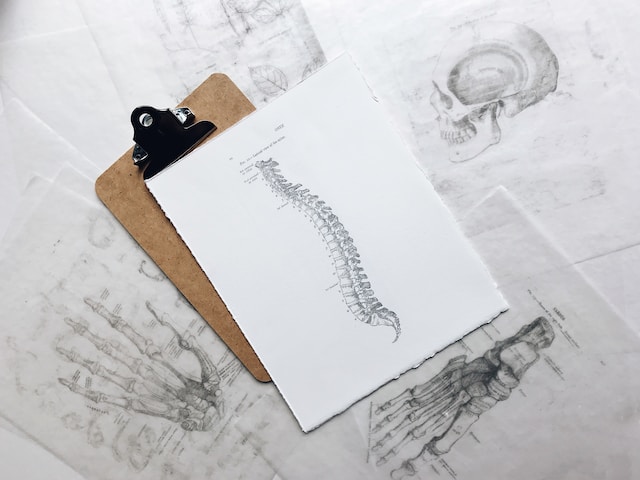When I first began working with digital advertising in the healthcare industry, I naively thought it was all about pain management ads.
As a young and healthy guy, it was the only type of care I was familiar with, having seen the health of elderly family members decline over the years.
Then, as I was preparing my research for this article, I noticed how difficult it was to find certain pain management clinics, despite patients suffering and being desperate for solutions.
It seemed ridiculous that something that high in demand was so ineffective at matching themselves with those in need.
To close the gap and make it easier, I’ve found a bunch of pain management ads in the wild that you can use for inspiration.
In this article, we’ll also summarize the persuasive ideas they use (like how clinics stand out from the crowd), so you can use these insights to build your own successful campaigns along with targeting ideas.
Let’s begin by looking at ad examples from the real world.
Table of Contents
32 pain management ad examples
I’ve included some ads that are better than others, so you’ll get a sense of the different approaches out there.
Keep an eye out for those that feel corporate and non-emotional, and think about how well they would persuade you to book an appointment if you needed help.
Facebook ads




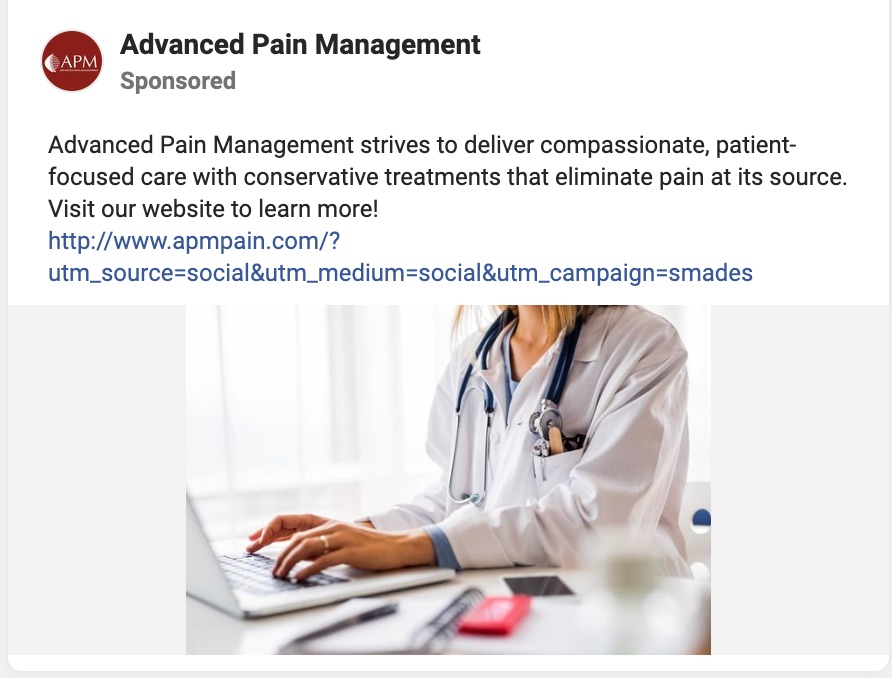

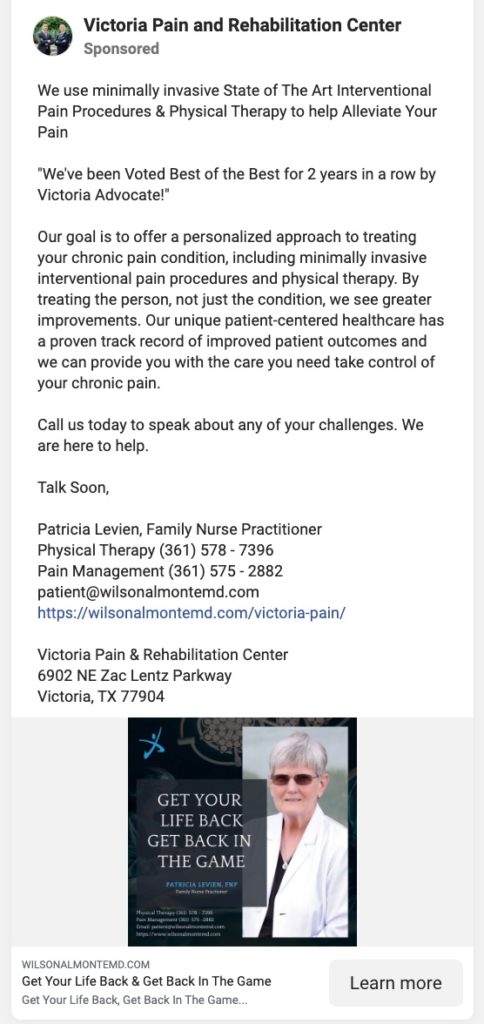
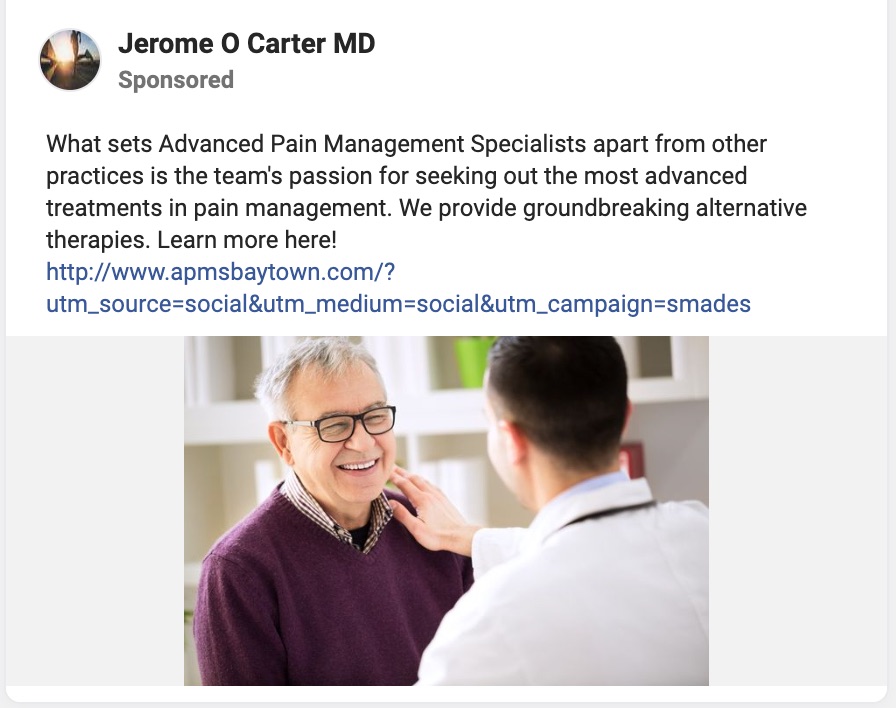
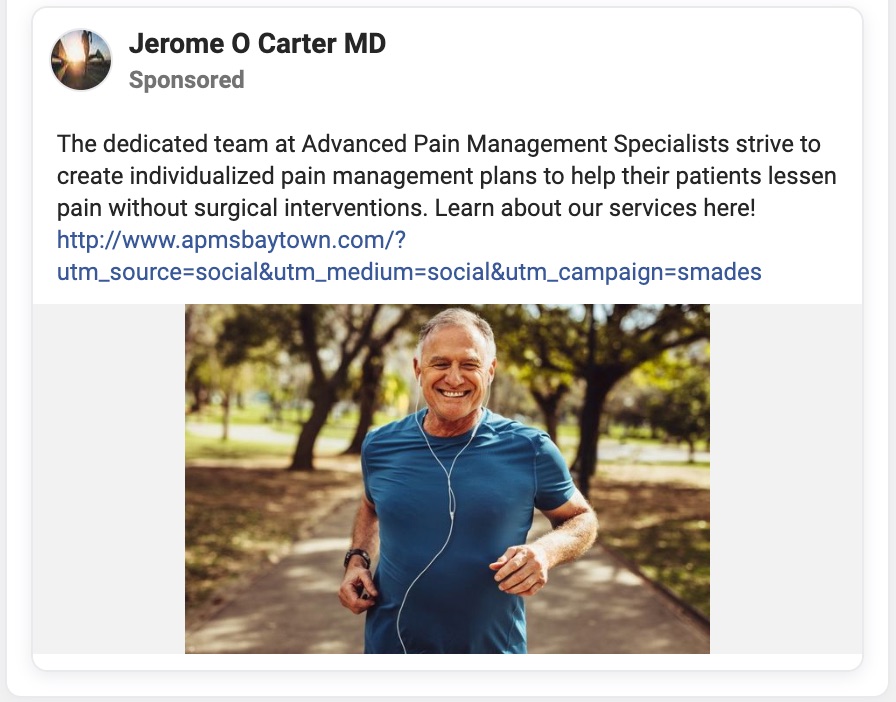

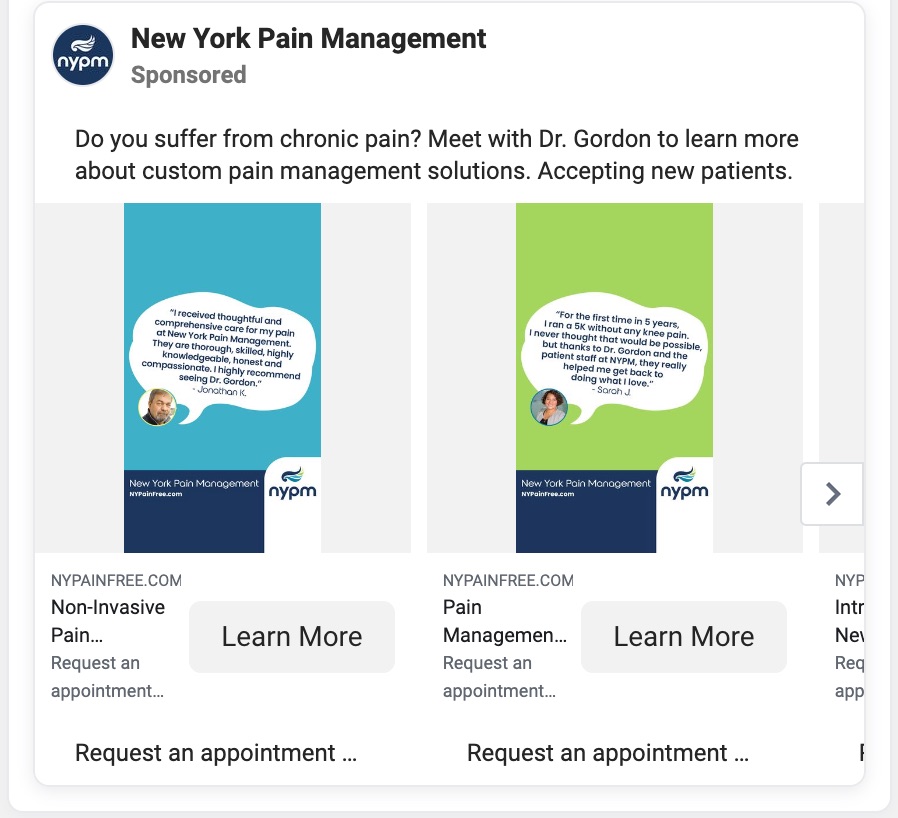
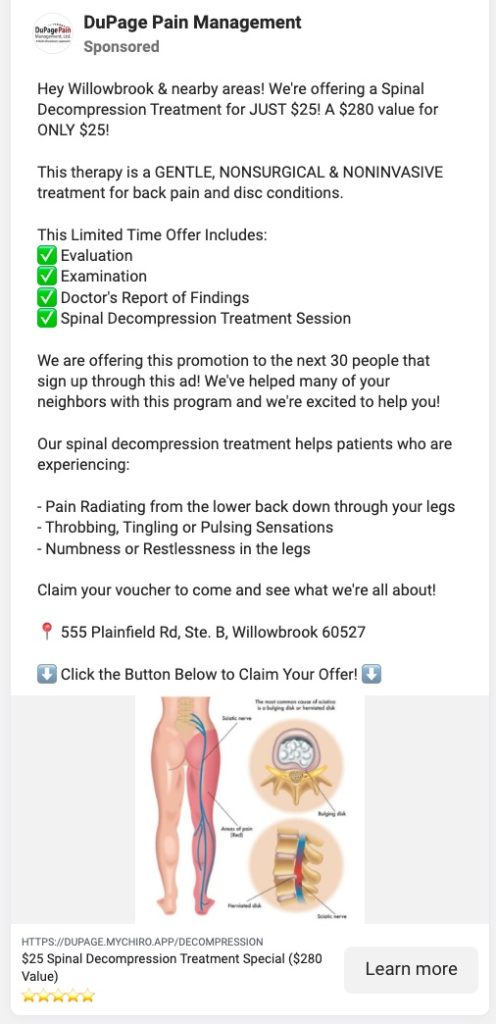
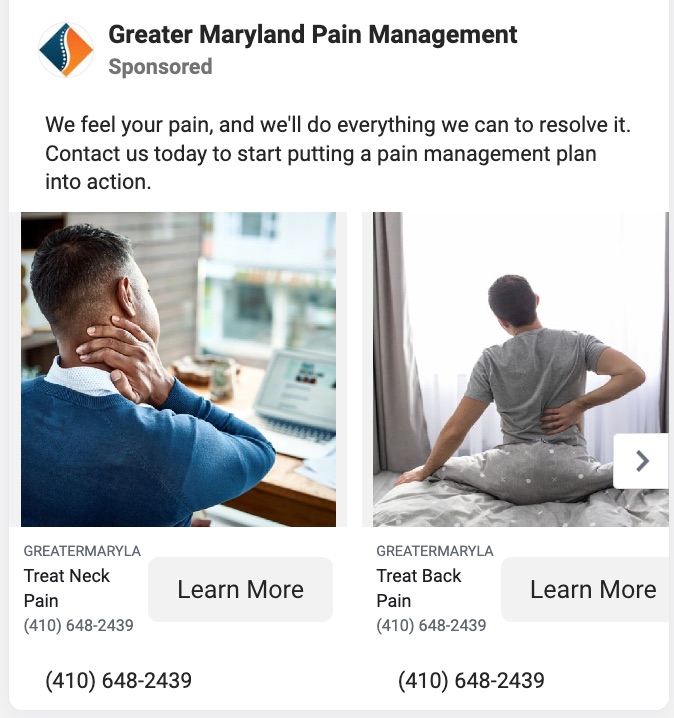


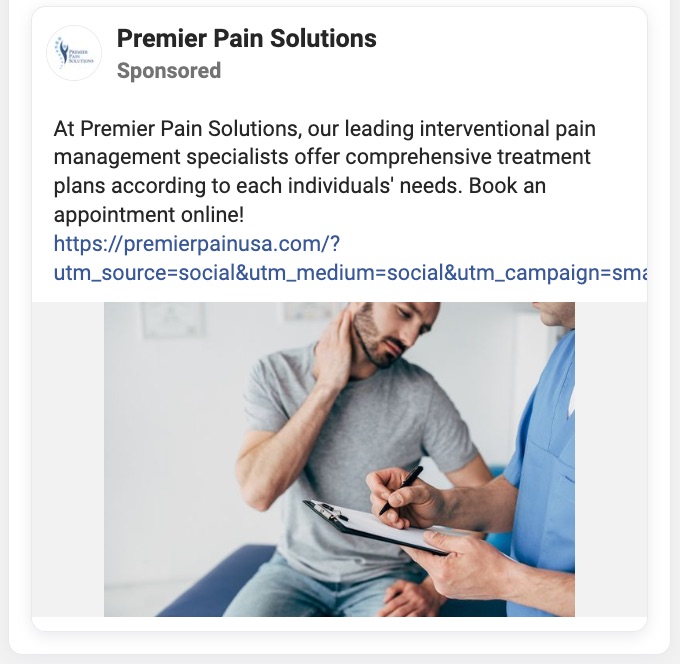

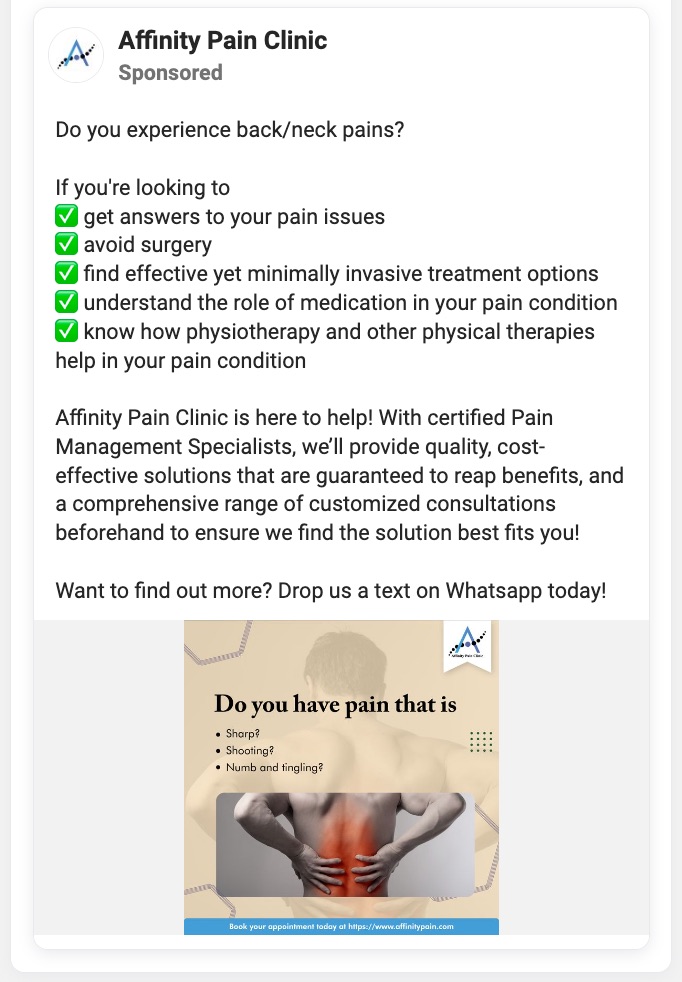
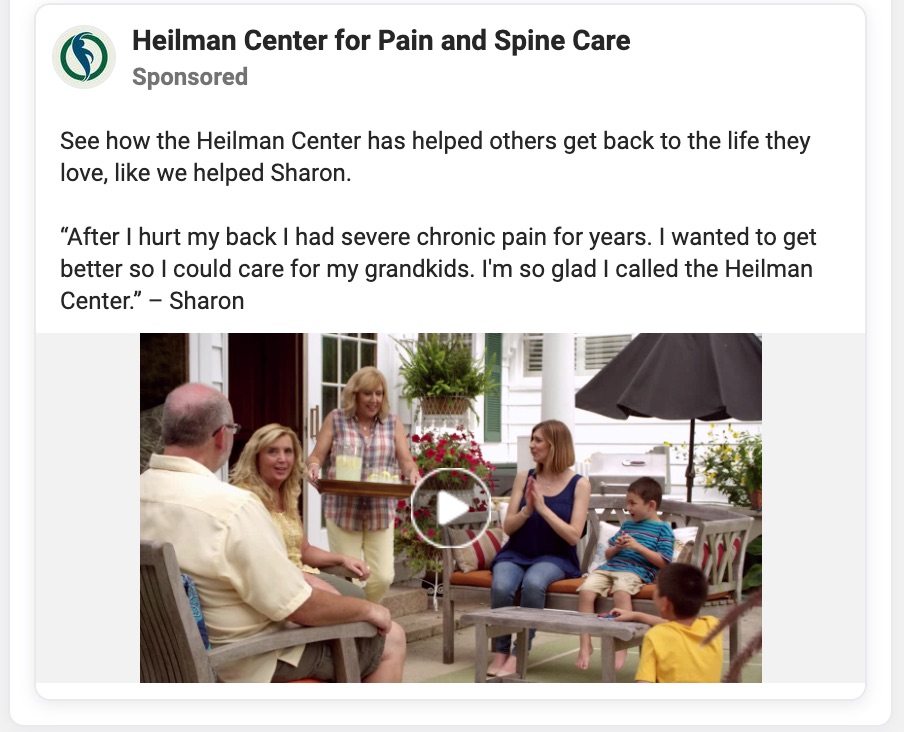
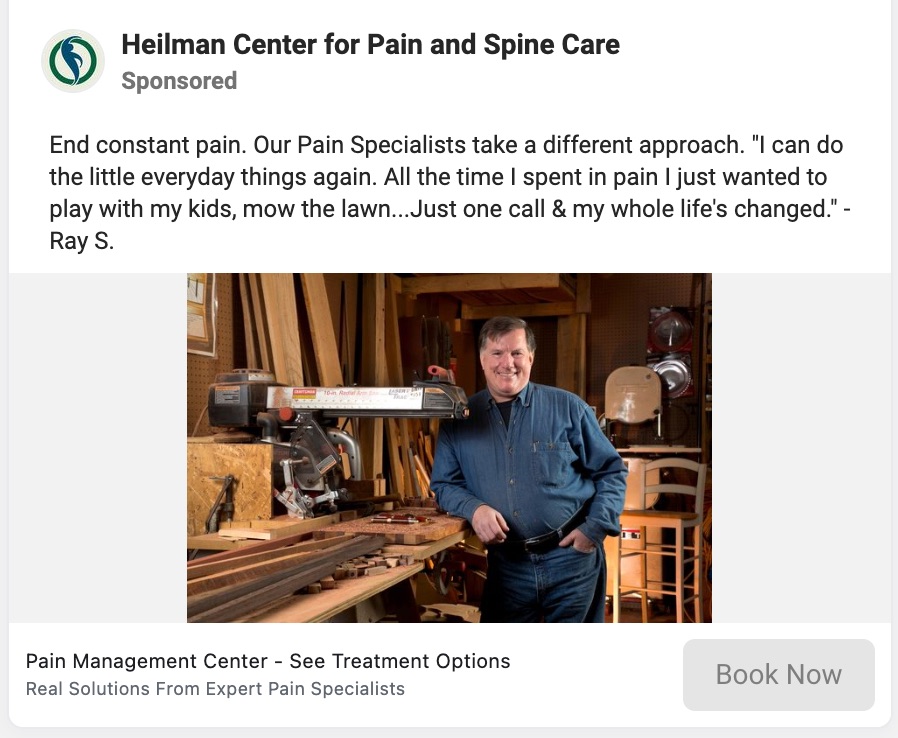
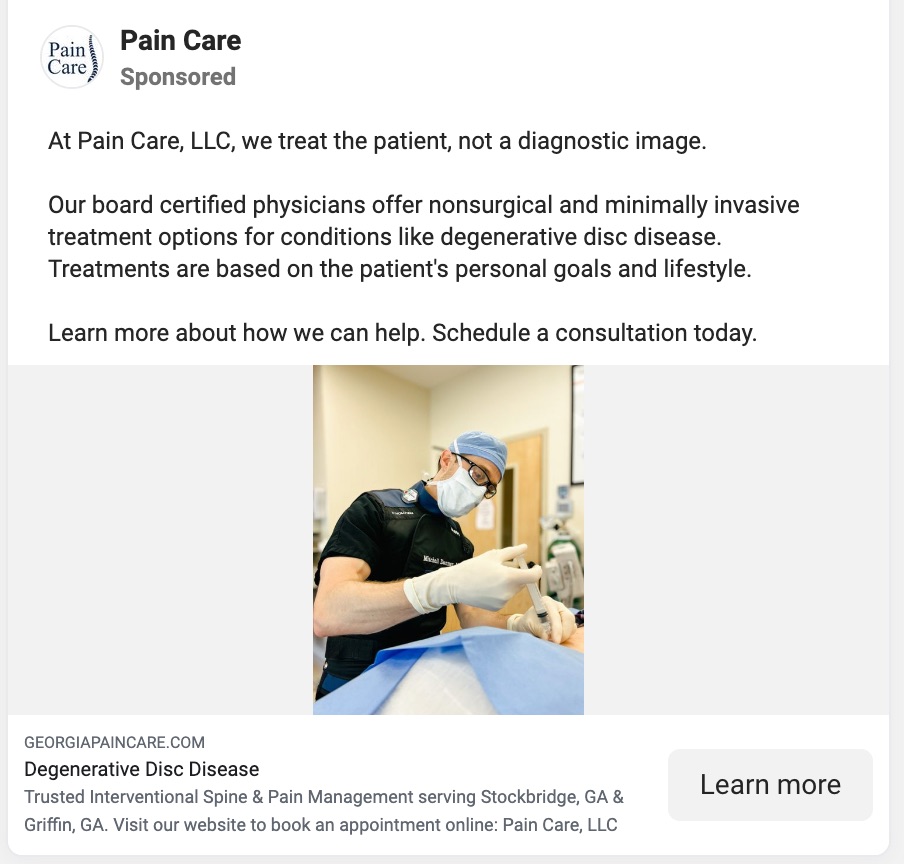

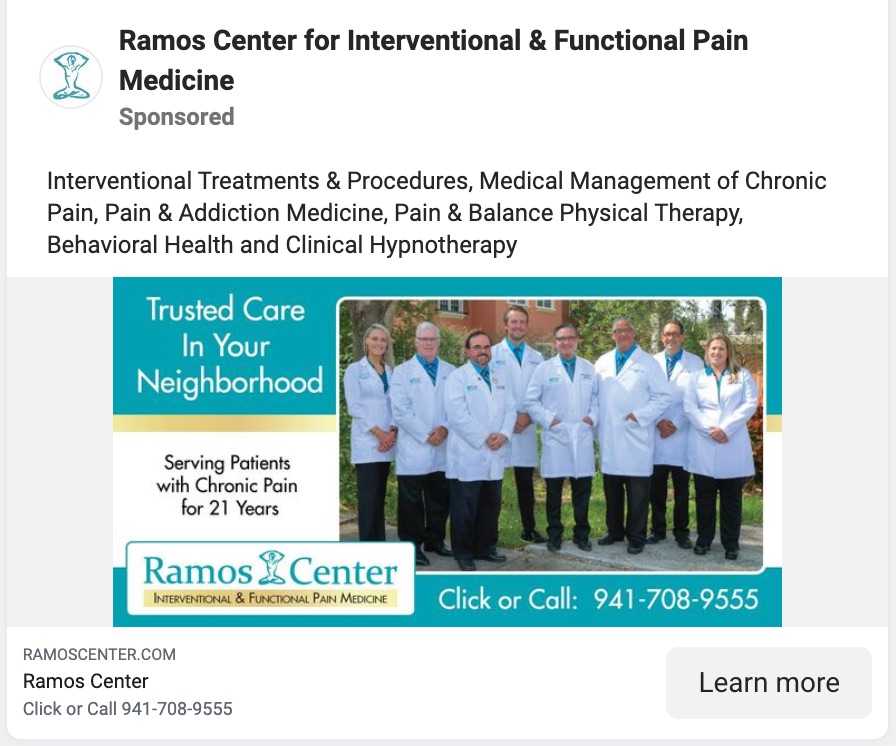
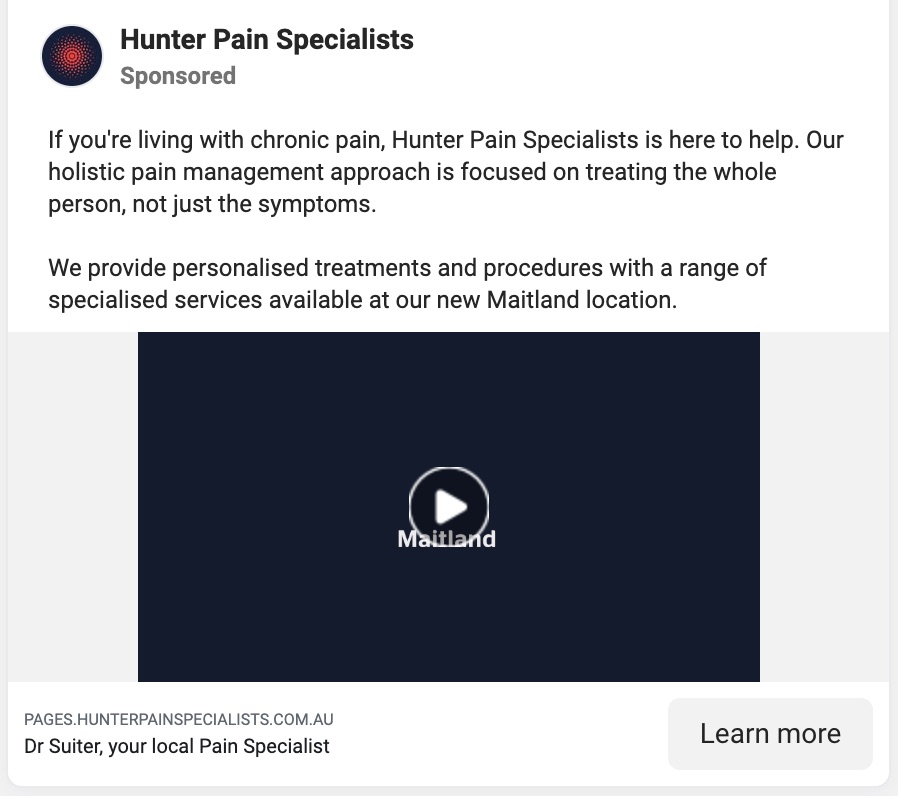
Google search ads








Steal these insights from the pain management ads
Let’s take it a step further and look at the persuasive elements used in these pain management ads, so you can apply them to your campaigns.
I’d like to look at the following categories:
- Patient benefits
- Patient symptoms
- Offers
- How the clinics stand out from the crowd
Benefits
- Get your life back (quality of life)
- Do the things you love with confidence
- Pick up your (grand)kids and/or play with them
- Dance at weddings
- Mow the lawn (who knew that could be exciting!?)
- Stay active and healthy
- Avoid surgery (minimally invasive)
- Avoid depression and stop isolating yourself due to the pain and physical challenges
- Non-invasive alternative to taking risky pills to manage the pain (with crazy side effects)
Angles
- Case study
- Hard sell
Offers
- Free consultation + MRI review
- Free knee screening voucher
- Spinal decompression treatment discount
Note: some ads limit these offers to just a few people, which is a powerful technique, but miss an important detail: saying WHY it’s limited… without doing so, it feels like a random number made up to serve the ad
Symptom examples mentioned
- Swelling and stiffness (knee)
- Inability to fully straighten the knee (knee)
- Redness and warmth (knee)
- Popping or crunching noises (knee)
Stand out from the crowd/credibility
- Accepts insurance/Medicare
- No referral (from an MD) required
- Voted best in X area
- Proven track record
- Years of experience
- Show where the doctor(s) were trained
- The number of positive reviews/votes
- Doctor house calls
CTA
- Call
- Click sign up
You don’t need crazy strategies, you just need to reach the right people with your pain management ads
The magic of digital ads only comes through if you’re able to reach the right people: the potential patients looking for help.
It’s relatively easy to build a campaign that on the surface appears to be reaching the right patients. We get puzzled when it doesn’t perform, but there are a few “hidden” reasons that are easy to oversee.
One is that the ad platforms aren’t as effective at reaching the people you intended as they may appear at first. For example, if you limit your ads to a small neighborhood, you might reach that person after they leave that area as the location detection wasn’t updated frequently enough.
Another is that these platforms tend to add many subtle configurations to cast a wider net and reach the largest number of people. It can be surprisingly hard to find these settings in a dashboard full of configurations.

Thirdly, we might misjudge what certain targeting configurations mean. For example, if you target people fitting the description “pain management” in Google’s display ads dashboard, who do you really reach and what were the criteria used to judge that they were suitable to fit this group of people?
And when they are not suitable anymore, will Google remove them from the group?

My point is that you can’t depend on one targeting configuration to carry your campaigns due to this lack of transparency. You’ve got to test and compare the results of several different configurations in order to build a winning campaign that drives bookings.
I love the results and clarity that come from a well-done patient persona, but I hate doing the work. It often feels like extra work that may or may not lead anywhere.
Patient persona and targeting ideas for your inspiration
To give you a head start, I’ve prepared a few fictional, but very real, personas you can base your pain management ads and targeting on.
1. The journey of Clara
Clara is a woman who experienced chronic pain for years. It’s been hindering her daily life and causing immense frustration for her and her loved ones.
She’s tried several different attempts at finding relief, including medication and surgery, but all have failed.
It has greatly decreased her quality of life day to day, but she continues to try new methods in the hopes that something will eventually change. She dreams of getting her independence back and pursuing her passions with confidence.
2. Mark the athlete
Mark is an athlete who experienced a career-threatening injury that left him in terrible pain.
Being an athlete, not only was his health at risk, but also his livelihood and everything he worked for his entire life. He fears that he’ll never fully recover both physically and mentally.
He has attempted to find help that specializes in sports-related injuries. He has seen some improvements but is afraid he has to change his career. He doesn’t want to get stuck behind a desk for the rest of his work life while being unable to perform the sport he loves, even on a casual level.
3. Emily the child
Emily is a young girl who suffered from a chronic pain condition that disrupted her daily life and affected her ability to be a child. She grew up far too fast.
Her family worked hard to find a solution to her pain, from seeking different opinions to researching extensively. Treatment plans have made improvements in Emily’s life but she’s still far from living like a normal child.
4. James, the middle-aged man
James is a middle-aged man who has been relying on pain medications for years to manage his chronic condition.
He is concerned about the long-term effects of medication and has a desire to explore alternative approaches. He has tried interventions like physical therapy, acupuncture, and mindfulness techniques with varying degrees of success.
Even if these persona examples aren’t the most amazing and detailed you’ve ever seen, they make it easier to come up with creative targeting ideas to ensure that you reach the potential patients you’re actually trying to reach.
To reach James (example #4), you could for example run broad age targeting at 40+ or 50+ on Facebook and let their machine learning algorithm optimize based on conversions. There are loads of people with chronic pain out there who aren’t searching for information online.
You might consider excluding interests in fitness and working out as not exercising regularly tends to lead to pain issues, especially if we’ve worked blue-collar jobs.
Alternatively, you might also be able to target people looking for crutches, wheelchairs, and other similar tools.
Takeaways
- Small changes to your ad copy can make a huge difference to the number of clients you bring through the door. Especially by talking about the benefits patients lose due to the pain along with an offer they get excited about
- The biggest problem with pain management ads tends to be reaching the right patients as ad platforms offer so many targeting configurations these days that it’s easy to mix them up
- Patient personas can help hone in on the ad copy, targeting, and ultimately the success of your campaigns as we can make our campaigns more specific
Not being able to play with your kids due to knee pain is an example of a pain point. An example of a pain solution advertisement is promoting a solution that highlights how that problem is solved and what the experience will be like for the patient afterward.
Pain management is popular to promote with ads on social media and Google search due to the targeting configurations available. There are what feels like a million ways to reach the right people and in this article, we’ll explore some of them.
A few examples of pain management could be physical therapy, injections, medication, and exercise.
